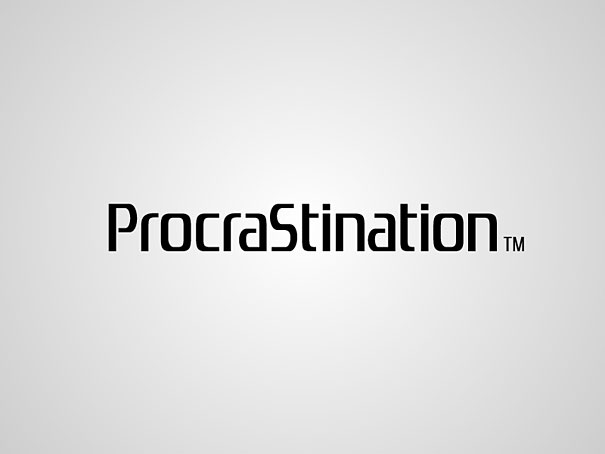E-commerce is a growing commodity in web development, and any web developer can benefit from learning how to develop for a popular e-commerce solution. The majority of web development clients these days require or want some sort of solution for selling goods or services online. Furthermore, they want this solution to be easy for them to manage, update, and also track sales and related finances. Features are a necessity for a client, but even more important is security, stability, and expandability from a development perspective.
In this post, we'll look into some of the most popular e-commerce solutions used today, both from the benefits relative to clients, and from a development perspective. Not only will we look into pre-made solutions, but also discuss the pros and cons of using paid or premium services, self-hosted solutions, open-source solutions, or the option of creating custom e-commerce systems built to fit each website.
What Features Are Necessary?
Different e-commerce systems obviously offer different features. Some are standard across many, but some may offer more than others. Features are important to consider, not only to help the client get all the features needed and wanted, but also in terms of maintaining simplicity and efficiency on the website. For example, if a client needs a simple ecommerce system with only a few basic features, there would be no need to use an application that holds additional features that would never be used, and that would only take up space on the server as well as space in the back-end admin area. Also, for paid solutions, there is no need to pay for features the client doesn't need, only upping their cost, and lowering your profit margin as a developer.
Take a moment to define and collaborate on the features needed within the e-commerce system. Does the client need to sell products, services, or both? Do they need recurring payments? Do they need an easy way to track orders, see statistics on growth, or otherwise, right within the admin area? After determining the needed features, then research on different vendors can begin, or otherwise decide on a custom solution.
Paid vs. Open-Source
Which is really better? Paid or open-source software? Our first instinct for this question in any niche is a paid-for, premium version. This is generally where the quality is in other areas, but is it true for shopping cart and e-commerce software as well?
Because the need for online shopping carts has been around for a while, we fortunately have several quality options to choose from in both categories. There are a lot of developers that are dedicated to creating high-quality, secure, and stable open-source solutions in this area. Likewise, there can also be paid solutions that are not up to par with some of the best open-source options. This is an area that has truly developed successfully within the last several years.
In order to determine which is better, it's really just a matter of reviewing the features needed and each piece of software being considered. If all the features can be covered by a quality open-source solution, then that's great, otherwise one of the paid vendors may be a better choice. Like with many other things, paid versions however will likely have better official support from the company, and an added sense of security in terms of updates, patches, and any needed fixes.
Custom-made Solution
Finally, the third option is to ignore all pre-existing options and create a custom solution for the website's unique needs. This can definitely be the most time-consuming option, but what about cost effectiveness? The final outcome really depends on the features needed and the complexity involved. In many cases, a simple solution can be hand-coded that remains a cheaper and offers more efficient solutions. At other times, a custom and more complex solution may still be necessary in order for complete customization and control. Debugging, theming, and adding on new features can definitely be easier with one's own code.
One other and probably more common reason that a client would need a custom solution is that they are needing the e-commerce portion to be added onto an existing website, and the other content and design cannot be sacrificed. For many websites, a custom solution built around the pre-existing website is a much easier solution. Sometimes, it may be the only solution.
Many of the features of a custom solution will depend on one's own coding style and needs, but below are a few basic tutorials for getting started, at least with the logic behind the type of script:
- PHP MySQL Shopping Cart Tutorial
- Building a simple PHP shopping cart
- PayPal Integration Wizard
- Website Payments Standard: Have custom cart
- Lynda.com: Building an Online Shopping Cart
Of course, as a web developer, one also has the option of creating an e-commerce and shopping cart application from the ground up, and reusing it easily for many clients. This solution can reap the benefits in both areas - being able to work with one's own code and customize more easily, but also having the convenience and time and energy saving efforts of using a pre-existing model.
Volusion
Volusion is a premium solution that offers all the quality features a client company would need, with great support and extensive add-ons. The company also offers a number of services from design and code customization, to marketing, and to training. There are also a number of premium quality templates that can act as a base to your own design for customization, or just as the design overall. Pricing depends on the number of products needed, data storage, and support features. The cheapest starts at $29/mo. and can upgrade easily - perfectly suitable for most clients budgets.
Shopify
Shopify is another premium software, with plenty of free themes and extensions. It comes with its own iPhone App for the store, support, analytics, and a great interface. They also offer cheap hosting for a Shopify store that can make the website easier to maintain in terms of support. The hosting offers features that are perfect for e-commerce websites, such as unlimited bandwidth, fast servers, automatic backups and more.
Big Commerce
Big Commerce from a design and development standpoint offers fully customizable design, and also a drag and drop interface for design features on the client's end. Just style the 'widgets' and the client can also have more control without endless updates, tweaks, and maintenance from you, the designer. Big Commerce offers features for social media, marketing, product options, checkout options, multi-currency support, and more. There is also an API and documentation as well that allows developers to have further customization.
Magento
Magento comes as a free, open-source edition, and as two premium editions: professional and enterprise. The premium versions offer more features, as can be seen on their edition comparison page. Basic features include SEO optimization, marketing tools, analytics, a mobile version, easy site management, varying checkout features, customer accounts, and an extensive admin back-end. There are also a number of extensions and an API for custom development.
osCommerce
osCommerce is an open-source shopping cart solution with a variety of common and useful features. From a design and development standpoint, many agree that this is the easiest platform to work with. There are customer accounts, an extensive admin back-end, HTML product descriptions, several payment options, real-time shipping quotes, and more.
Open Cart
Open Cart is a 100% open-source and free shopping cart system with a great community behind it. It is fully expandable with unlimited products, categories, pages, and more. It also has some nice features for a more community-based online shopping experience like product reviews, ratings, and customer accounts. The back-end interface is clean and well organized, and the front-end templates are open-source too. There are several extensions available plus an API for further development customization and a theming guide for custom design as well. There is even an area where developers can sell extensions and templates specifically for this platform to earn some extra cash flow.
Tomato Cart
Tomato Cart is also completely free and open-source shopping cart software. The framework is lightweight and lightning fast, but yet feature-rich with an excellent interface. Beyond all the basic shopping cart features, it also offers easy management for customers, orders, and products. Tomato Cart comes built with its own CMS, for easy content management to build not only an online store around, but an entire website.
PrestaShop
PrestaShop is an open source solution with over 250 features, and integrates with many of the most common forms of payment: PayPal, Moneybookers, and direct credit card payments. It is easily and completely customizable from a design perspective, and even the backend admin area is customizable. There are also plenty of other features that are not standard on other shopping carts that can be beneficial, such as a Customer Loyalty program with a points system.
eCart
eCart is another open source solution with easy templating for designers and plenty of the standard features any shopping cart would need. It also features a sleek AJAX powered admin backend for handling customers, orders, products, and statistics. It's designed to be SEO friendly, and is perfect for online stores that will have a lot of products as it carries advanced catalog and search features.
Conclusion
Online shopping is hitting new records every year, and the need for secure, reliable, and feature-rich shopping cart and ecommerce solutions are a must on the web today. Many clients need e-commerce solutions built into their prebuilt websites, or otherwise need a new website with a shopping cart built or customized. It's already difficult to be a web developer that does not have to deal with e-commerce solutions, so it'd be best to gain familiarity with one piece of software now, or otherwise create one's own framework.
Do you currently have clients that require e-commerce solutions? What do you use, and how do you go about it? Which is the easiest, in your opinion, from a development standard, while at the same time offering clients the features they need?
- 30 Creative Clothing Ecommerce Website Designs
- Increasing Conversion with Web Design
- Implementing Ecommerce: What You Need To Know
- Put Your eCommerce Checkout on a Diet Plan
Written by: Kayla Knight for Onextrapixel - Showcasing Web Treats Without A Hitch | No comment














